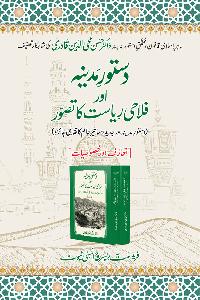Contents
List of Tables xix
List of Figures xxi
Appendix Chapter 2: List of Tables xxi
Appendix Chapter 4: List of Tables xxii
Appendix Chapter 5: List of Tables xxii
Appendix Chapter 6: List of Tables xxiv
Appendix Chapter 7: List of Tables xxiv
Abbreviations
Foreword
Chapter 1
Introduction
1.1 The Context of the Study
1.2 The Research Problem and its Relevance
1.3 Research Questions
1.4 Objectives of the Study
1.5 Contribution and Significance of the Study
1.6 Outline of the Thesis
Chapter 2
ECO Countries: Economic Structure and International Trade
2.1 Introduction
2.2 Economic and Political Structures and International Trade
2.3 Pakistan’s Political and Economic Structure
2.3.1 Pakistan’s Exports and Imports
2.3.2 Pakistan’s Composition of Trade
2.3.3 Pakistan’s Direction of Trade
2.4 Iran’s Political and Economic Structure
2.4.1 Iran’s Exports and Imports
2.4.1.1 Iran’s Oil Exports
2.4.1.2 Refined Petroleum Imports
2.4.2 Iran’s Composition of Trade
2.4.3 Iran’s Direction of Trade
2.5 Turkey’s Political and Economic Structure
2.5.1 Turkey’s Exports and Imports
2.5.2 Turkey’s Composition of Trade
2.5.3 Turkey’s Direction of Trade
2.6 Kazakhstan’s Political and Economic Structure
2.6.1 Kazakhstan’s Exports and Imports
2.6.2 Kazakhstan’s Composition of Trade
2.6.3 Kazakhstan’s Direction of Trade
2.7 Conclusion
Chapter 3
ECO Countries: Trade Policies and Trade Liberalisation
3.1 Introduction
3.2 Trade Policy Liberalisation
3.2.1 Closed and Open Trade Regimes
3.2.2 Non-Tariff Barriers
3.2.3 Tariff Barriers
3.3 ECO Trade Policy Context
3.3.1 Pakistan
3.3.1.1 Trade Barriers and Trade Liberalisation
3.3.2 Iran
3.3.2.1 Trade Barriers and Trade Liberalisation
3.3.3 Turkey
3.3.3.1 Trade Barriers and Trade Liberalisation
3.3.4 Kazakhstan
3.3.4.1 Trade Barriers and Trade Liberalisation
3.4 Conclusion
Chapter 4
Regional Trade Arrangements of ECO Countries
4.1 Introduction
4.2 Meaning of Trade Integration
4.2.1 Unilateral Trade Agreements
4.2.2 Bilateral Trade Agreements
4.2.3 Multilateral Trade Agreements
4.2.4 Regional Trade Agreements
4.3 Theory of Regional Trade Agreements (RTAs)
4.4 Types of Regional Trade Agreements (RTAs)
4.5 Experience of RTA in Developed and Developing Countries
4.6 Experience of RTA Attempts of ECO Countries
4.6.1 Promotion of Trade and Investment among ECO countries
4.6.2 Intra-Regional Trade
4.7 Progress towards Trade Liberalisation in the ECO
4.7.1 ECO Trade Agreement (ECOTA)
4.7.2 Transit Trade Agreement (TTA) and Transit Transport Framework Agreement
(TTFA)
4.7.3 ECO Customs Cooperation
4.7.4 Harmonisation, Standardisation and Recognition
4.7.5 ECO/ITC Project for Trade Promotion
4.7.6 ECO Chamber of Commerce and Industry
4.7.7 Investment Promotion
4.7.8 ECO Trade and Development Bank & ECO Reinsurance Company
4.8 Infrastructural Limitations and Progress for RTA among ECO Countries
4.8.1 Transportation Facilities and ECO Region
4.8.2 Pakistan
4.8.3 Iran
4.8.4 Turkey
4.8.5 Kazakhstan
4.9 Conclusion
Chapter 5
Comparative Advantage of Selected ECO Countries
5.1 Introduction
5.2 Theories of Comparative advantage
5.2.1 Studies Testing Comparative Advantage Theory
5.3 Balassa’s Revealed Comparative Advantage
5.3.1 Balassa’s RCA Index (BRCAI)
5.4 Vollrath’s Revealed Competitive Advantage Indexes
5.5 Data and Sources
5.6 Estimation of Balassa’s RCA Index
5.6.1 Balassa RCA Index: Textile Yarn Fabric (Product Category 65)
5.6.2 Balassa Revealed Comparative Advantage Index: Crude Oil (Product
Category 333)
5.6.3 Balassa Revealed Comparative Advantage Index: Natural Gas (Product
Category 343)
5.6.4 Balassa Revealed Comparative Advantage Index: Cereals and Cereals
Preparations (Product Category 04)
5.6.5 Summary Balassa Revealed Comparative Advantage Index
5.7 Vollrath Revealed Export, Trade and Competitive Advantage Indexes
5.7.1 Textile, Yarn Fabric (Product Category 65)
5.7.2 Crude Oil (Product Category 333)
5.7.3 Natural Gas (Product Category 343)
5.7.4 Cereals and Cereals Preparations (Product Category 04)
5.7.5 Textile, Yarn Fabric (Product Category 65)
5.7.6 Crude Oil (Product Category 333)
5.7.7 Natural Gas (Product Category 343)
5.7.8 Cereals and Cereals Preparations (Product Category 04)
5.7.9 Textile, Yarn Fabric (Product Category 65)
5.7.10 Crude Oil (Product Category 333)
5.7.11 Natural Gas (Product Category 343)
5.7.12 Cereals and Cereals Preparations (Product Category 04)
5.7.13 Textile, Yarn Fabric (Product Category 65)
5.7.14 Crude Oil (Product Category 333)
5.7.15 Natural Gas (Product Category 343)
5.7.16 Cereals and Cereals Preparations (Product Category 04)
5.8 Trade Substitutes and Complementarities
5.9 Conclusion
Chapter 6
Trade Intensity Analysis: Trade Flows among ECO Countries and between ECO and Other Countries
6.1 Introduction
6.2 Trade Intensity: Theory and Models
6.2.1 Kojima Model
6.2.2 Drysdale Index
6.2.3 Rose and Frankel Models
6.2.4 Other Models
6.3 Determinants of Special Country Bias
6.4 Empirical Literature
6.5 The Model Used for the Analysis in this Chapter
6.6 Data and Sources
6.7 Results and Discussion
6.8 Conclusion
Chapter 7
Gravity Model Analysis: Trade Flows of ECO Countries
7.1 Introduction
7.2 Theoretical Foundation of the Gravity Trade Model
7.3 Empirical Applications of Gravity Trade Models
7.3.1 General Gravity Trade Model
7.3.2 Commodity Based Gravity Trade Models
7.3.3 Country Specific Gravity Trade Models
7.3.4 The Impact of Costs on Trade Flows
7.3.5 Combining Cross Sectional Data and Time Series Data
7.4 The Gravity Trade Models Used in this Analysis
7.4.1 Core Explanatory Variables in the Country Specific Gravity Model
7.4.1.1 The GDP Variables
7.4.1.2 Population
7.4.1.3 Per Capita GDP
7.4.1.4 The Distance Variable
7.4.1.5 Export and Import Prices in the Gravity Equation
7.4.1.6 The Trade Openness Index
7.4.1.7 Preferential Trade Agreements
7.4.1.8 Border
7.4.1.9 Culture
7.5 Export and Import Models Estimation
7.5.1 Export Model
7.5.1.1 Hypotheses
7.5.1.2 Interpretation of Hypothesis
7.5.2 Import Model
7.5.2.1 Hypotheses
7.5.2.2 Interpretation of Hypothesis
7.5.3 Sample Size, Data sources, Procedure and Issues
7.5.4 Model Estimation Procedure
7.6 Discussion of Estimation Results
7.6.1 Export Model
7.7 Estimation of Trade Potential among Selected Countries
7.7.1 Export Flows
7.7.2 Import Flows
7.8 Conclusion
Chapter 8
Summary and Conclusion
8.1 Introduction
8.2 An overview of the Study
8.3 Achievements and Findings of Study
8.4 Policy Implications
8.5 Limitations of the Study
8.6 Areas for further Research
Appendix Chapter 2: Tables
Appendix Chapter 4: Tables
Appendix Chapter 5: Tables
Appendix Chapter 6: Tables
Appendix Chapter 7: Tables
List of References
Copyrights © 2024 Minhaj-ul-Quran International. All rights reserved




![The Constitution of Medina & The Concept of the Welfare State [Introduction and Salient Features]](https://minhajbooks.com/images-books/thumbnails200/The-Constitution-of-Medina-amp-The-Concept-of-the-Welfare-State-Introduction-and-Salient-Features-Dr-Hassan-Qadri_722.jpg)